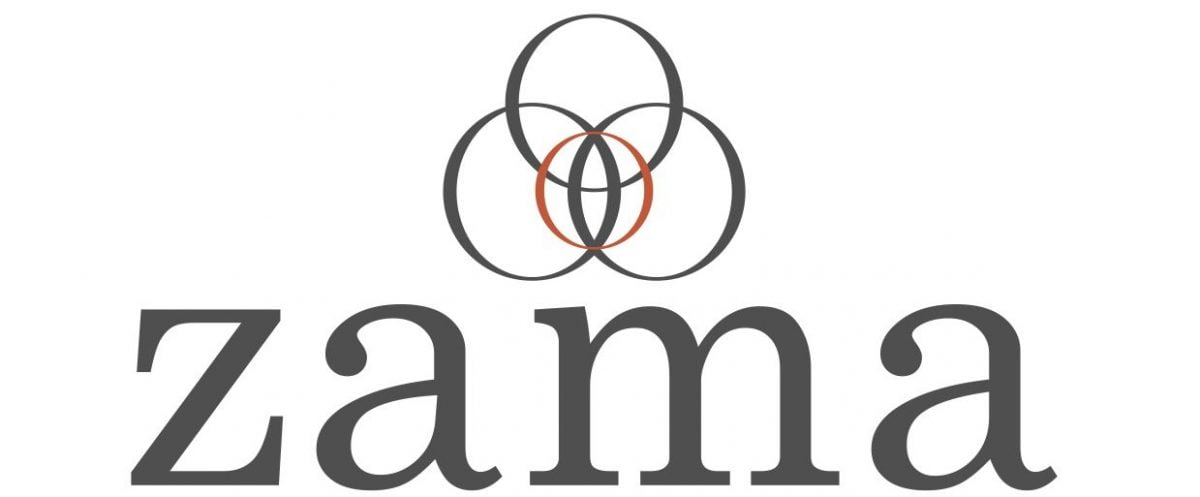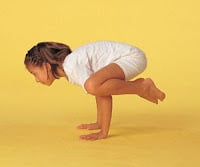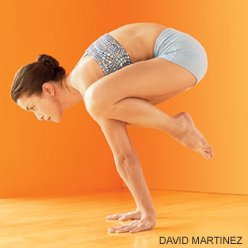Crow (Kakasana) and Crane (Bakasana) are two yoga asanas that are very similar to each other, and are often referred to interchangingly.
But they are in fact two different poses.
In the first photo, we see Kakasana (Crow), the slightly easier variation of the pose with bent arms. In the second photo, we see Bakasana (Crane), with the arms straight. In Crane pose, your centre of mass is shifted higher and so it is more difficult to hold. Both poses have similar benefits, with a focus on the wrists. These postures are great for repetitive strain injuries, as they strengthen the wrists. To ensure there is not excessive pressure on the wrists, you need to make sure the alignment of the posture is correct, with the fingers facing forward, interal rotation of the forearm and external rotation of the upper arm. The energy is drawn up the arm to activate the muscles needed to hold the pose. There are side variations of these postures too. Take a look at our side crow video here.
Crow and Crane have some great physcial benefits:
- Strengthens shoulders, arms and wrists
- Stretches the upper back
- Strengthens the abdominal muscles
- Opens the groin
- Tones the abdominal organs
Metaphysically, these asanas open the heart chakra and work into the heart meridian which runs along the arms. The heart chakra and meridian are related to love, compassion, kindess and patience and their opposites, with the lungs, breasts, thymus gland and the heart itself being some of the organs associated with this energy centre.
You should avoid or take extra care in these postures in if you have carpal tunnel syndrome or are pregnant.


